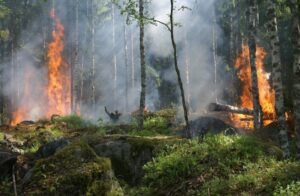Over a thousand people flocked to an Idle No More solidarity rally outside Vancouver City Hall on Friday afternoon, an event which coincided with hundreds of others across the country on the day First Nations leaders were slated to meet with Prime Minister Harper in Ottawa over treaty rights and changes to environmental protections.
Like so many other decentralized and largely leaderless movements, the Idle No More campaign has drawn criticism for being disorganized and lacking a clear message or specific set of demands. But it is precisely that grassroots nature which has allowed it to grow in popularity, almost mirroring the Occupy movement in how it offers various groups of people a shared vehicle to express multiple points of dissent — all of them channeling, of course, toward Ottawa and the Prime Minister.
The event in Vancouver had all of these elements on display. It was noticeably disjointed and ad hoc, and seemed to lack organization. Speakers were poorly heard, and the crowd arranged itself in a messy circle that restricted visibility. There appeared to be little intention to communicate a message to anyone or anything other than the throng of TV cameras and operators which sat front and center.
But there was also great enthusiasm and wide appeal. This First Nations protest attracted all demographics, with signs (a few of them written in Mandarin) capturing a wide and general dissatisfaction with regard to the Prime Minister’s leadership: “Canada Now Under Mis-Management,” “Let’s Shorten Harper Season,” “Water is Life,” “We Want the Crown Not the Court Jester,” “Choose Wisely for the future,” “C-45/C-38: Acts of Violence.”
Five provinces away, in Ottawa, the Prime Minister was speaking with leadership from the Assembly of First Nations. The meeting was largely the result of Attawapiskat Chief Theresa Spence’s hunger strike, which she began on December 11 with the intention of winning a face-to-face meeting with Harper and Governor General David Johnston. Later in the day, Spence met with Johnston at Rideau Hall.
It’s doubtful those meetings will produce any dramatic changes, such as reestablishing some of the environmental protections which Harper’s omnibus budget bill has eviscerated over the course the past year. But it is possible that new standards and expectations of future dialogue between First Nations groups and the Federal Government have been set.
With the Idle No More movement — and by extension with Theresa Spence’s hunger strike — Canada’s First Nations have asserted themselves as heterogeneous group that one ignores at their own political risk.
The Prime Minister seems to have recognized this — if not belatedly — which perhaps accounts for his decision to meet with AFN leadership, in an attempt to placate the movement.
If he is truly paying attention though, he might also notice that the Idle No More campaign is anything but a strictly First Nations movement or consumed with only First Nations issues. It has grown and become a vehicle for the expression of dissent in a way that appeals to Canadians from all walks of life, and from all corners of the country.









